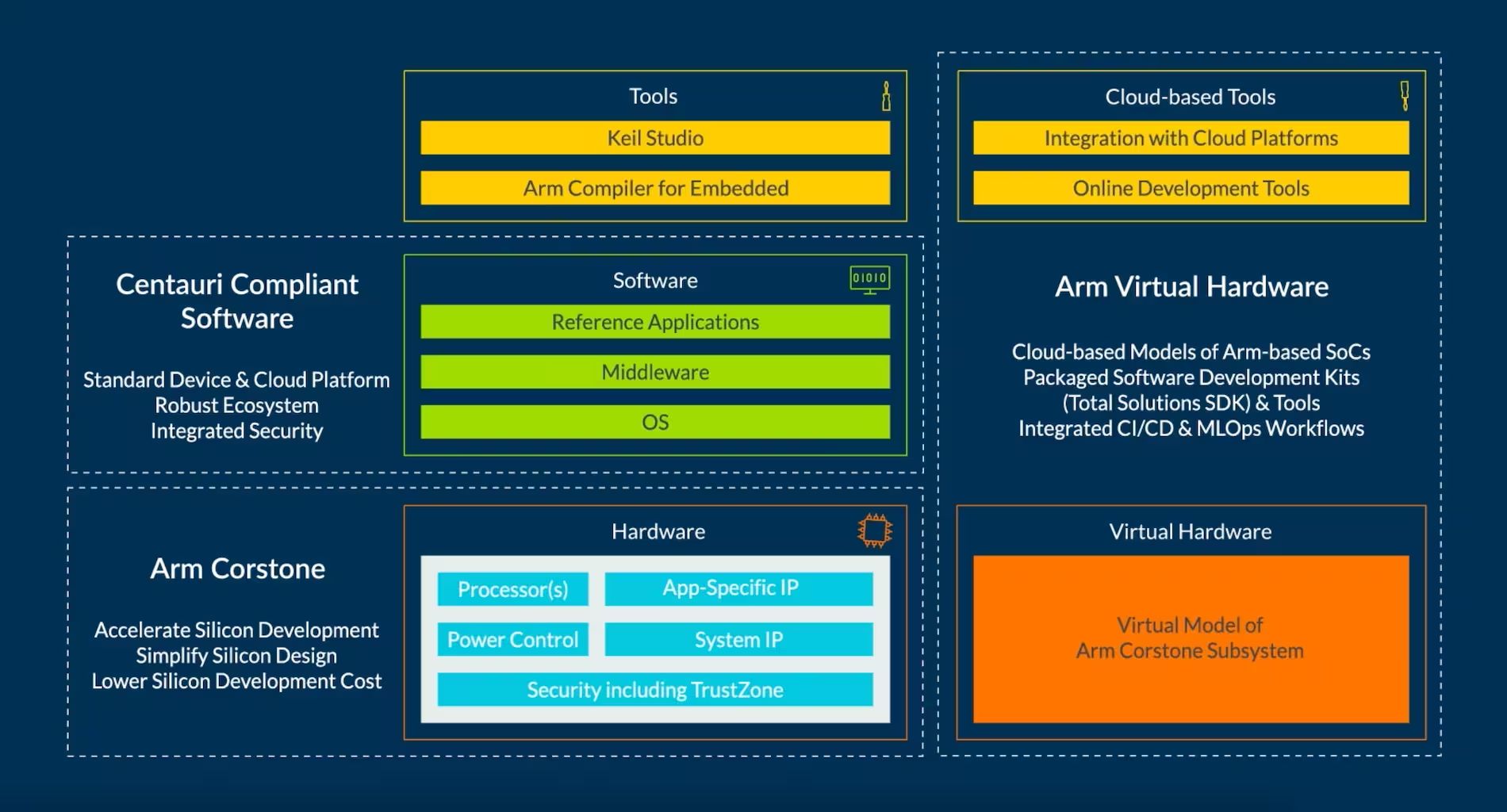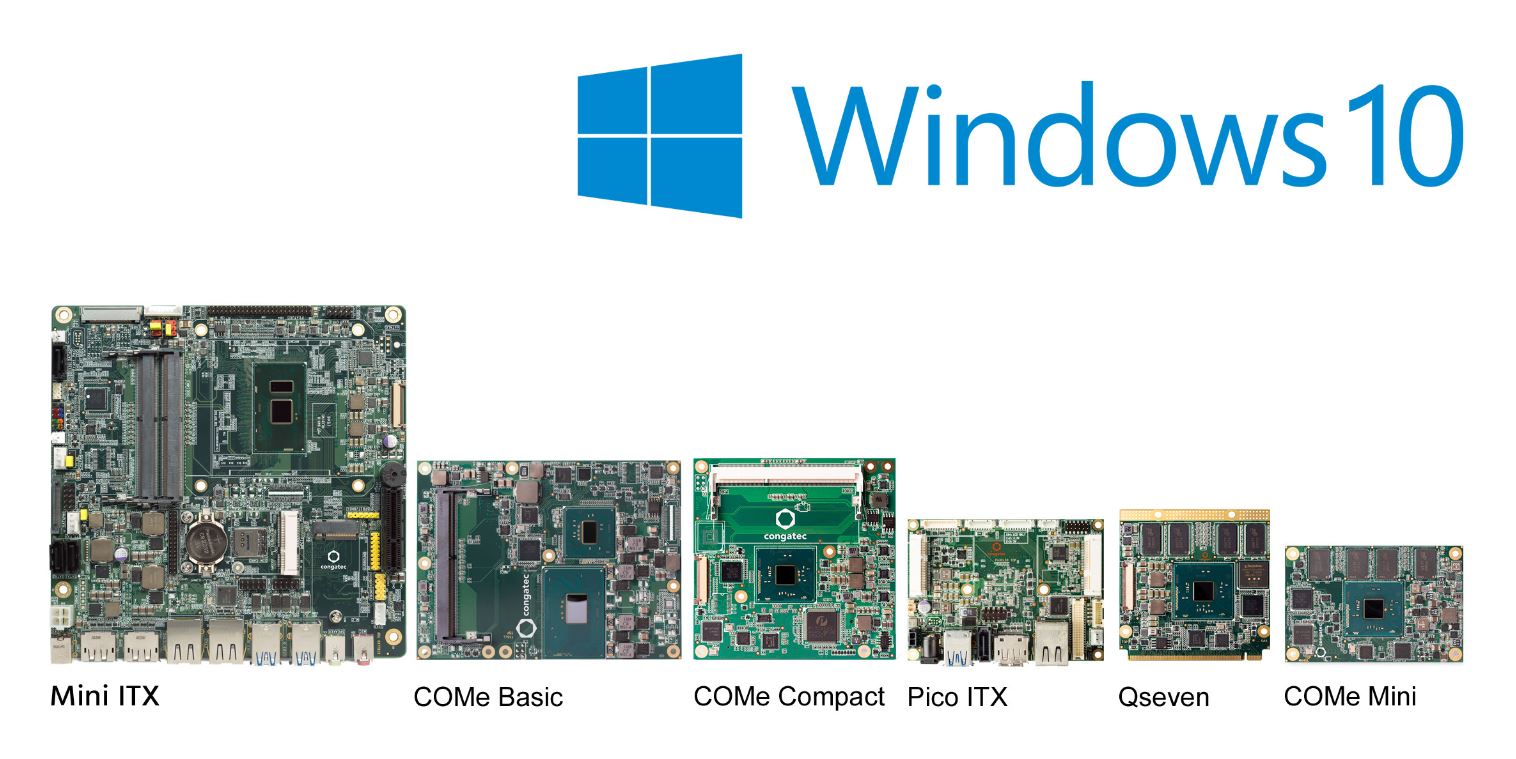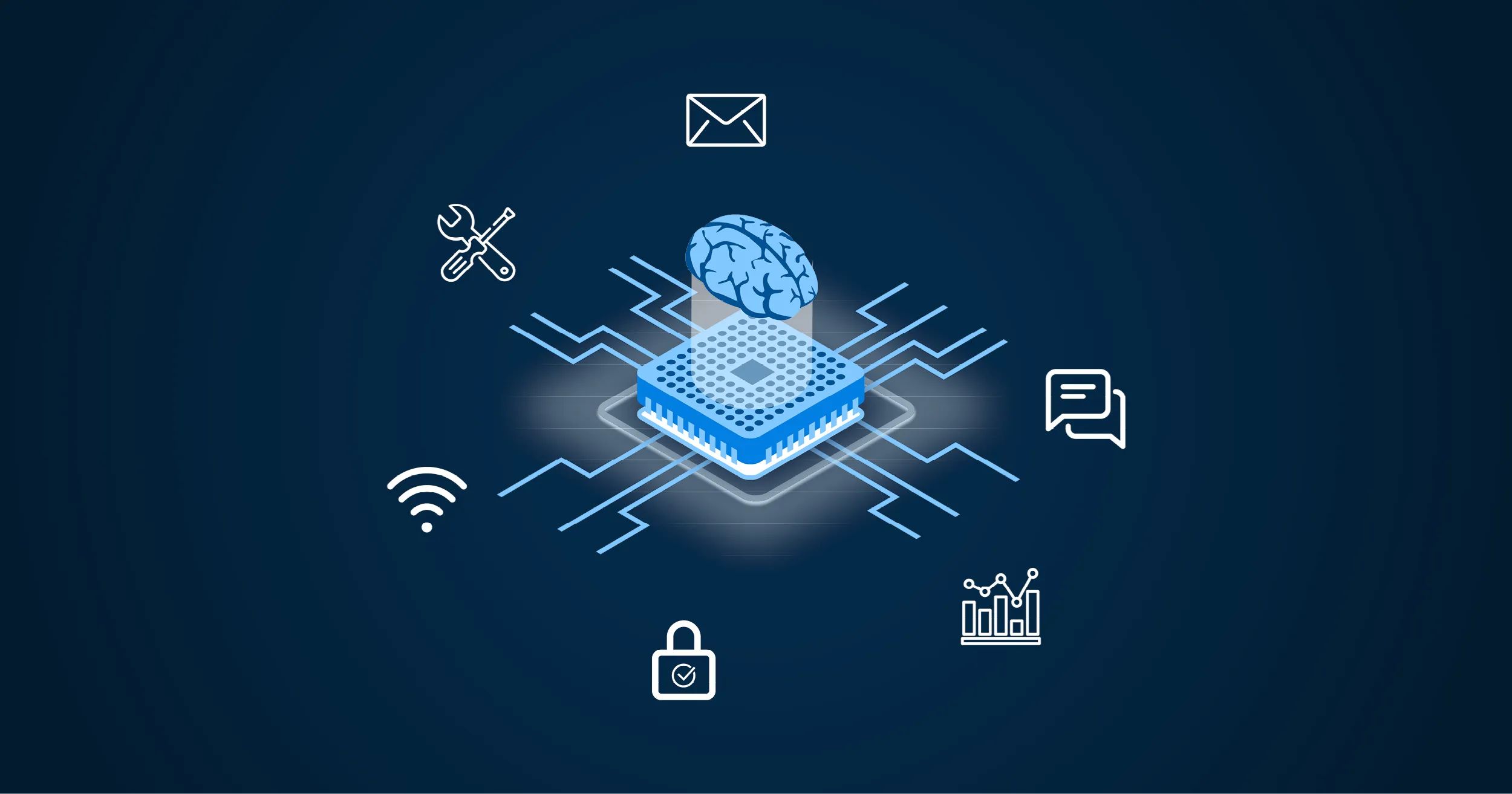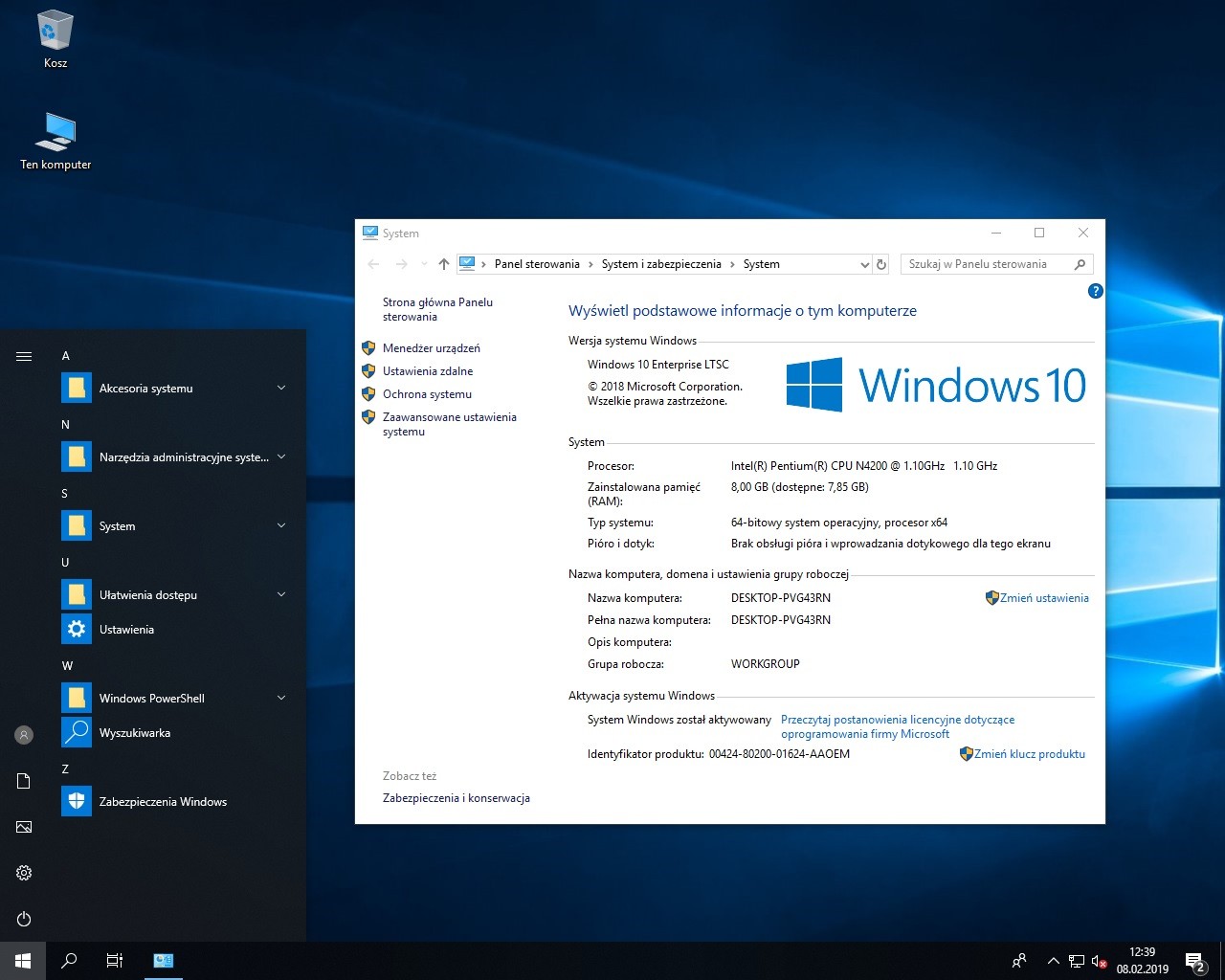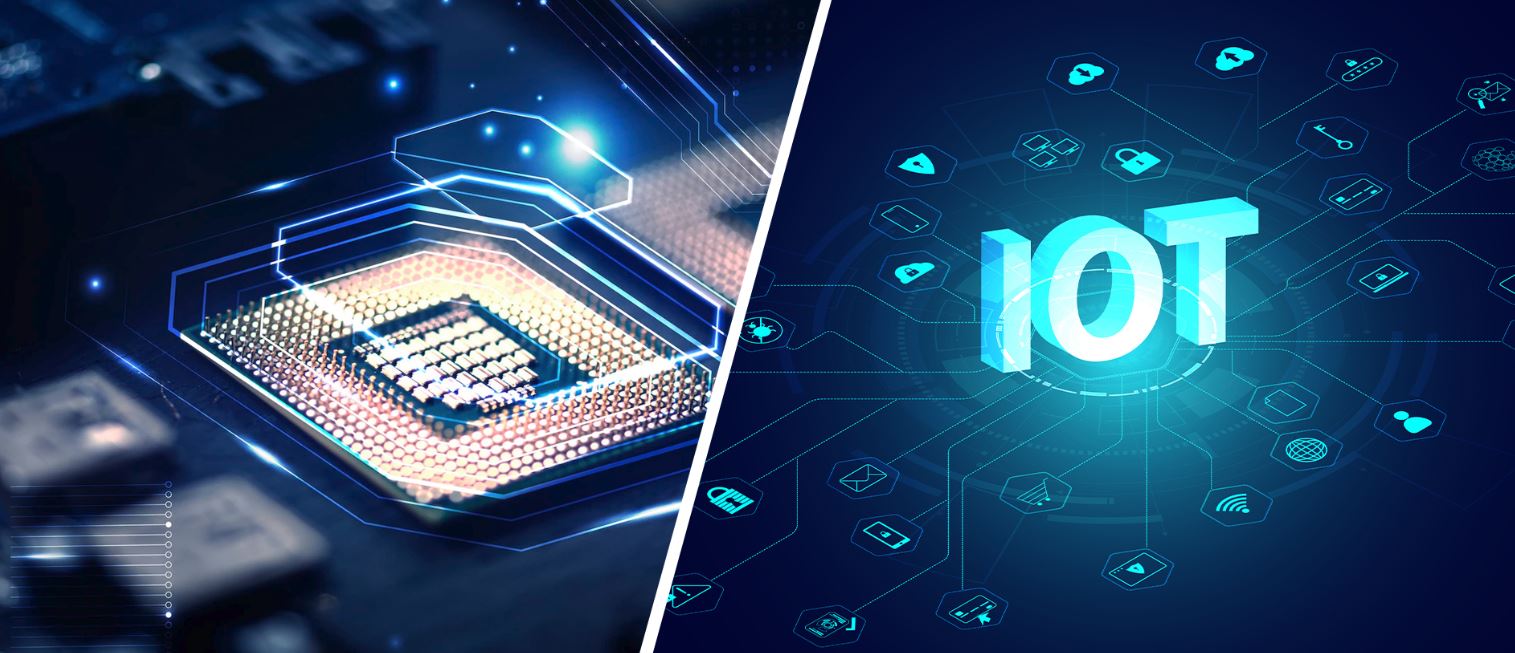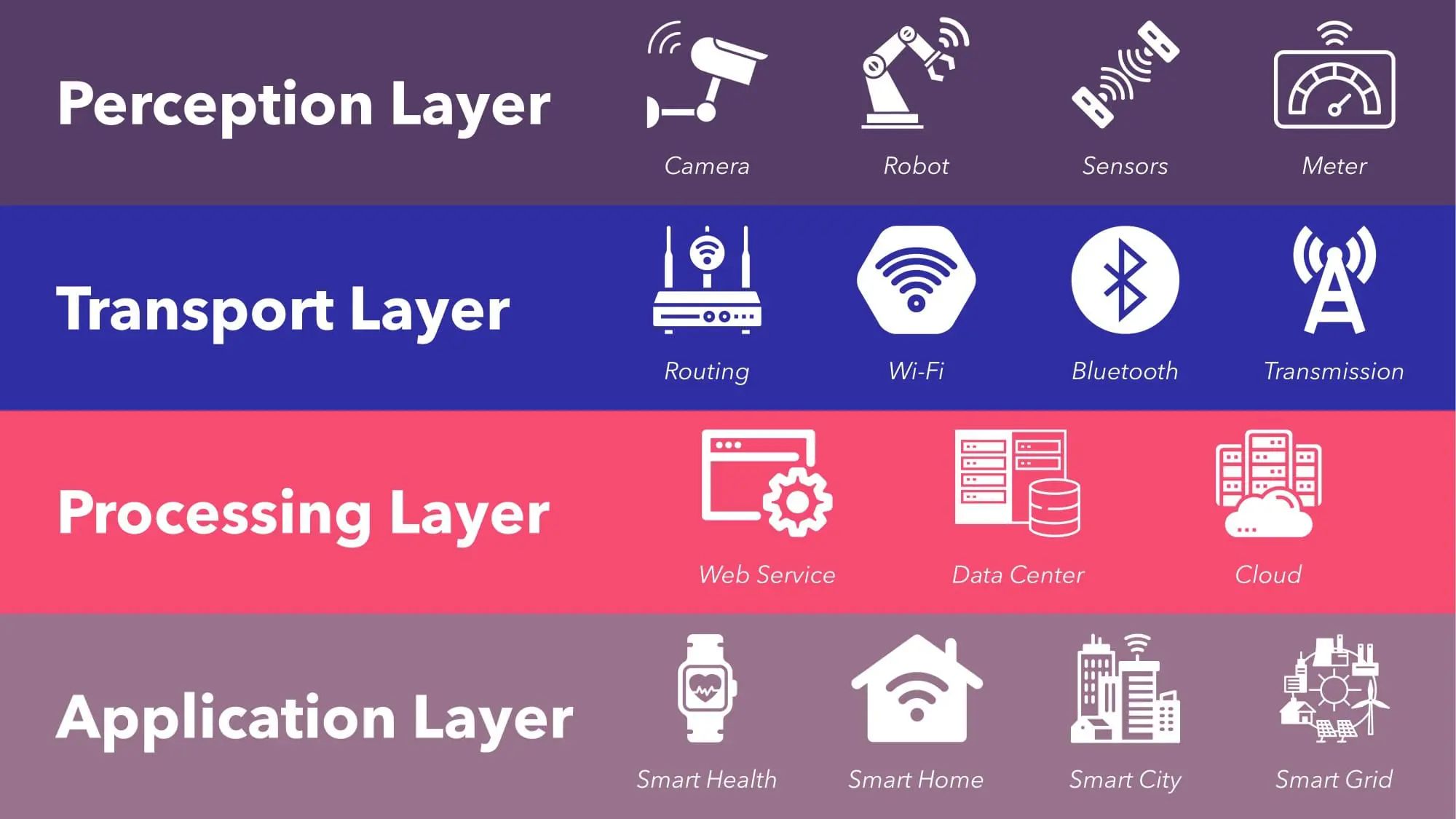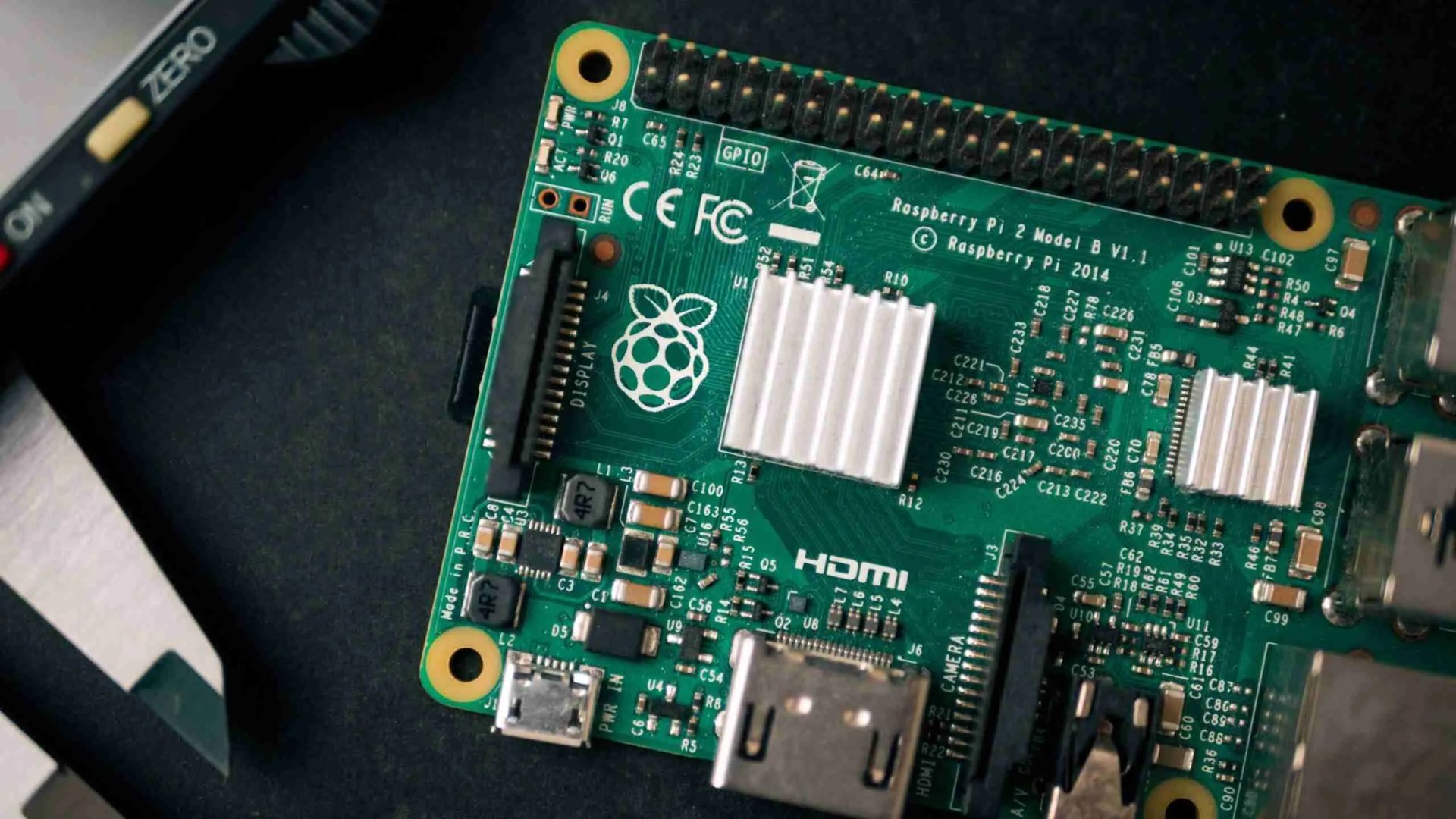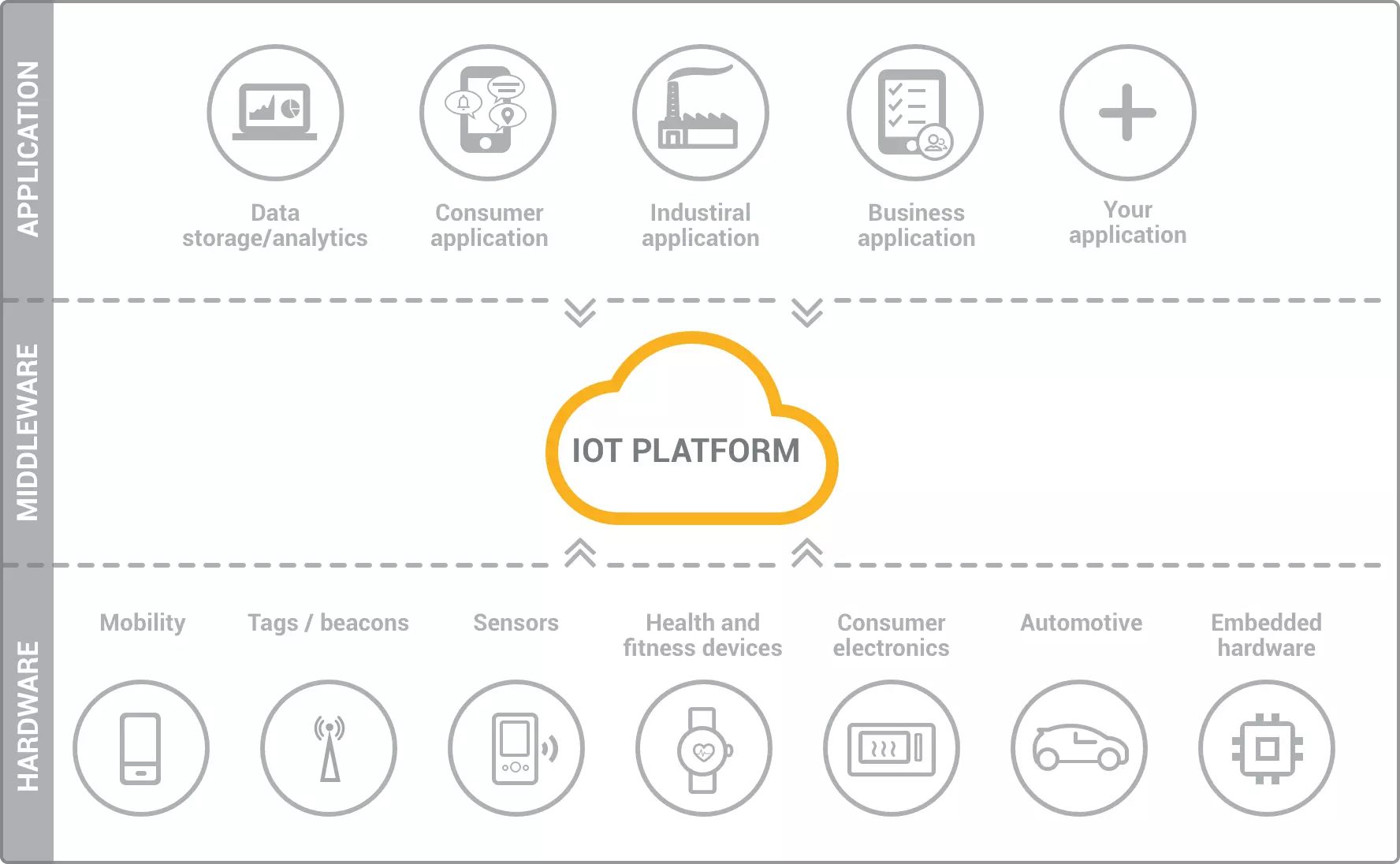Introduction
The Internet of Things (IoT) has rapidly emerged as one of the most promising technological advancements of recent times. It refers to the interconnected network of physical devices, vehicles, appliances, and other objects embedded with sensors, software, and connectivity that allows them to collect and exchange data. This interconnectedness enables these devices to communicate and interact with each other, and provides users with an unprecedented level of control and automation in their everyday lives.
The IoT has revolutionized various industries, including healthcare, transportation, agriculture, manufacturing, and even home automation. With an estimated 75 billion connected devices by 2025, the potential of IoT is immense, and it continues to evolve and shape our world.
The core concept behind IoT is the ability to gather data from various devices and analyze it to gain valuable insights. With sensors and connectivity embedded in everyday objects, we can capture real-time information about our surroundings, monitor conditions, and even control devices remotely. This data-driven approach has the potential to transform industries, optimize processes, and improve the overall quality of life for individuals and societies.
IoT systems work through a combination of hardware, software, and connectivity. Devices are equipped with sensors to collect data, which is then processed and transmitted via the Internet to a central system or other devices for analysis. The data can be used for a range of applications, from monitoring and automation to predictive maintenance and advanced analytics.
In this article, we will delve deeper into the world of IoT system development and application. We will explore how IoT systems work, the components involved, and the various applications they have in everyday life. Additionally, we will discuss the benefits and challenges of implementing IoT systems, as well as the development process and security considerations. Through case studies, we will highlight real-world examples of successful IoT system applications.
So, let’s embark on this journey to understand the fascinating world of IoT and its impact on our lives.
What is IoT?
The Internet of Things (IoT) is a network of interconnected physical objects that have the ability to collect and exchange data. These objects, also known as “things,” can include devices, sensors, vehicles, appliances, and even machinery. They are embedded with sensors, software, and connectivity, enabling them to communicate with each other and with humans.
The primary goal of IoT is to enable seamless communication and interoperability between objects, enhancing efficiency, convenience, and productivity. By connecting everyday objects to the internet, IoT allows for the exchange of information and data, leading to smarter decision-making, automation, and improved overall performance.
At its core, IoT is about connecting the physical world with the digital world. Through sensors, IoT devices can collect environmental data, such as temperature, humidity, light levels, and motion. This data is then transmitted to a central system or other connected devices for analysis and action.
IoT has revolutionized numerous industries, including healthcare, transportation, agriculture, manufacturing, and smart homes. In healthcare, for example, IoT devices can monitor patients’ vital signs, track medication adherence, and even enable remote consultations. In transportation, IoT can facilitate real-time monitoring of vehicles’ performance, optimize routes for logistics, and enhance driver safety.
The applications of IoT are virtually limitless. From smart cities to industrial automation, IoT has the potential to transform how we live, work, and interact with our environment. By enabling greater connectivity and data-driven decision-making, IoT promises to bring about a new era of convenience, efficiency, and innovation.
However, with the immense benefits that IoT offers, there are also challenges and risks to consider. Ensuring privacy and security of data, managing the vast amounts of data generated by IoT devices, and addressing interoperability issues are some of the challenges that need to be addressed for widespread adoption of IoT.
In the next sections, we will explore how IoT systems work, the components involved, and the various applications they have in everyday life. We will also discuss the benefits, challenges, and risks associated with implementing IoT systems.
How Does IoT System Work?
IoT systems involve a combination of hardware, software, and connectivity components that work together to enable seamless communication and data exchange between physical objects. Let’s take a closer look at the key elements that make up the functioning of an IoT system.
1. Sensors and Devices: IoT devices are equipped with various types of sensors that collect data from their surrounding environment. These sensors can include temperature sensors, motion sensors, humidity sensors, pressure sensors, and more. The collected data is then processed and transmitted for further analysis.
2. Connectivity: IoT devices need to be connected to the internet to enable data communication. This can be done through various means, such as Wi-Fi, Bluetooth, cellular networks, or even specialized IoT networks such as LoRaWAN or Zigbee. Connectivity allows the devices to transmit data to centralized systems or other connected devices.
3. Communication Protocols: Communication protocols are necessary to establish how IoT devices send and receive data. Common protocols used in IoT systems include MQTT (Message Queuing Telemetry Transport), HTTP (Hypertext Transfer Protocol), and CoAP (Constrained Application Protocol). These protocols ensure efficient and secure communication between devices and the central system.
4. Cloud Platforms: IoT systems often rely on cloud platforms to handle the storage, processing, and analysis of the vast amounts of data generated by IoT devices. Cloud platforms provide scalability, flexibility, and accessibility, allowing for real-time data monitoring and analysis. They also enable integration with other systems and services, such as analytics tools or machine learning algorithms.
5. Data Analytics: IoT data is often analyzed to extract meaningful insights and trigger actions. Advanced analytics techniques, such as machine learning and artificial intelligence, can be applied to identify patterns, anomalies, and trends in the data. These insights can drive efficient decision-making, predictive maintenance, and automation.
6. User Interface: IoT systems typically have a user interface that allows users to interact with the devices, monitor data, and control the system. This can be through a web interface, a mobile application, or other user-friendly interfaces. The user interface provides a way for users to receive insights, set preferences, and manage the IoT system.
Overall, the functioning of an IoT system involves the collection of data through sensors, transmission of data through connectivity, processing and analysis of data on cloud platforms, and user interaction through a user interface. This combination of components enables the seamless functioning of IoT systems, unlocking the potential for automation, optimization, and improved decision-making in various domains.
In the next sections, we will explore the different components of IoT systems in more detail and delve into their applications in everyday life.
Components of IoT System
An IoT system consists of several key components that work together to enable the seamless communication and data exchange between devices. Understanding these components is crucial in developing and implementing successful IoT solutions. Let’s take a closer look at the main components of an IoT system:
1. Sensors and Actuators: Sensors and actuators are fundamental components of IoT systems. Sensors collect various types of data from the environment, such as temperature, humidity, light, motion, and pressure. Actuators, on the other hand, enable devices to take action based on the collected data. For example, a smart thermostat can sense the temperature in a room and adjust it accordingly.
2. Connectivity: The connectivity component ensures that devices can communicate and share data with each other and with the central system. This can be achieved through various communication protocols and technologies, such as Wi-Fi, Bluetooth, Zigbee, or cellular networks. The choice of connectivity depends on factors like range, power consumption, and bandwidth requirements.
3. Gateways: Gateways act as intermediaries between devices and the central system. They aggregate data from multiple devices and transmit it to the cloud or a local server for further processing and analysis. Gateways also provide protocol translation, security, and data filtering capabilities.
4. Cloud Services: Cloud services play a crucial role in IoT systems as they provide the storage, processing, and analytics capabilities required to handle the massive amounts of data generated by IoT devices. Cloud platforms allow for scalability, flexibility, and accessibility, enabling real-time monitoring, data analysis, and decision-making.
5. Network Infrastructure: A reliable and robust network infrastructure is essential for the smooth operation of IoT systems. This infrastructure connects devices, gateways, and cloud services, enabling seamless data transmission. It includes network infrastructure components like routers, switches, and access points that ensure connectivity and data flow.
6. Data Analytics and Reporting: Data analytics and reporting are critical components of an IoT system. They involve processing and analyzing the collected data to extract meaningful insights and trends. Advanced analytics techniques, such as machine learning and artificial intelligence, can be applied for predictive maintenance, anomaly detection, and optimization.
7. User Interface: A user interface provides a way for users to interact with the IoT system, monitor data, and control devices. This can be through a web-based dashboard, a mobile application, or even voice-enabled assistants. The user interface enables users to set preferences, receive notifications, and access real-time information about the IoT system.
By understanding these components, businesses and developers can design and implement effective IoT solutions tailored to their specific needs. Each component plays a vital role in ensuring the seamless functioning of the IoT system and unlocking the potential for automation, optimization, and improved decision-making.
Next, we will explore the various applications of IoT systems in everyday life, showcasing how these components come together to enhance different domains.
IoT Applications in Everyday Life
The applications of IoT have permeated various aspects of our everyday lives, making our lives more convenient, efficient, and interconnected. From smart homes to wearable devices, the impact of IoT can be witnessed in numerous domains. Let’s explore some common IoT applications in everyday life:
1. Smart Home Automation: IoT technology has revolutionized home automation. From controlling lights and appliances remotely to setting intelligent temperature and security systems, IoT enables homeowners to manage their homes conveniently. Smart home devices, such as smart thermostats, voice assistants, and smart door locks, allow for seamless integration and control through a smartphone or voice commands.
2. Wearable Devices and Healthcare: IoT has transformed the healthcare industry with wearable devices that capture and monitor vital health data. Devices like fitness trackers, smartwatches, and health monitors continuously monitor heart rate, sleep patterns, and physical activity. This data can be shared with healthcare professionals for remote monitoring, early detection of health issues, and personalized health management.
3. Connected Cars: IoT technology has made vehicles smarter and more connected. From vehicle tracking and diagnostics to navigation and entertainment, connected cars enable improved driver safety, maintenance, and convenience. Features like real-time traffic updates, remote vehicle control, and emergency assistance enhance the overall driving experience.
4. Smart Grids and Energy Management: IoT systems can optimize energy consumption and management. Smart grids allow for real-time monitoring of energy usage, enabling more efficient energy distribution and reducing wastage. IoT-enabled smart meters and energy management systems help users track their energy usage, identify energy-saving opportunities, and contribute to a greener environment.
5. Smart Agriculture: IoT technology has also found its way into the agricultural sector. IoT devices and sensors can monitor soil moisture levels, humidity, and temperature, enabling farmers to optimize irrigation, reduce water usage, and improve crop yields. Additionally, connected systems can monitor livestock health, automate feeding, and provide valuable insights for precision farming.
6. Industrial Automation: IoT applications have significantly impacted industrial sectors, enabling automation, predictive maintenance, and enhanced operational efficiency. IoT-enabled systems can monitor equipment performance, detect anomalies, and schedule maintenance before failures occur. This reduces downtime and maximizes the productivity of manufacturing processes.
7. Smart Cities: IoT systems play a vital role in building smarter and more sustainable cities. Connected sensors and devices enable real-time monitoring of traffic flow, waste management, air quality, and public safety. This data-driven approach leads to better urban planning, efficient resource utilization, and improved quality of life for citizens.
These are just a few examples of how IoT applications are transforming everyday life. From the convenience and control of smart homes to the sustainable and efficient management of resources in smart cities, IoT has become an integral part of our interconnected world, offering countless opportunities for innovation and improvement.
In the next section, we will explore the benefits of implementing IoT systems and the advantages they bring to various domains.
Benefits of IoT System
The implementation of IoT systems brings forth a multitude of benefits and advantages across various domains. From increased efficiency to improved decision-making, IoT has the potential to transform industries and enhance our daily lives. Let’s explore some of the key benefits of implementing IoT systems:
1. Automation and Efficiency: IoT systems enable automation of tasks and processes, leading to increased efficiency and productivity. Devices and sensors can collect data, trigger actions, and make intelligent decisions without human intervention. This automation reduces manual efforts, streamlines operations, and optimizes resource utilization.
2. Real-Time Monitoring and Insights: IoT systems provide real-time data monitoring, allowing for immediate detection of issues or anomalies. Sensors can continuously capture and transmit data, enabling timely response and preventive actions. With real-time insights, businesses can make data-driven decisions, improve operational efficiency, and identify areas for optimization.
3. Cost Savings: IoT systems can generate significant cost savings by optimizing resource consumption, improving maintenance practices, and reducing energy wastage. For example, smart energy management can help households and businesses monitor and control their energy usage, leading to lower utility bills. Predictive maintenance based on IoT data can also minimize downtime and reduce repair costs.
4. Enhanced Customer Experience: IoT systems enable personalized and seamless experiences for customers. For instance, smart homes can adapt to individuals’ preferences, adjusting temperature, lighting, and entertainment options automatically. In retail, IoT devices enable targeted marketing campaigns, personalized recommendations, and improved inventory management, enhancing the overall customer experience.
5. Improved Safety and Security: IoT systems can enhance safety and security in various settings. Connected devices and surveillance systems can monitor critical areas, detect unauthorized access, and trigger alerts in case of emergencies. In industries like manufacturing and construction, IoT-enabled safety protocols and predictive maintenance can mitigate risks and ensure worker safety.
6. Data-Driven Decision Making: IoT systems generate vast amounts of data that can be analyzed to gain valuable insights. This data-driven approach enables businesses to make informed decisions, identify patterns, and predict trends. With advanced analytics techniques, such as machine learning and AI, organizations can unlock actionable insights, improve forecasting, and drive innovation.
7. Improved Sustainability: IoT systems contribute to sustainability efforts by optimizing resource utilization and reducing waste. In agriculture, for example, IoT-enabled irrigation systems can minimize water usage, promote efficient crop growth, and reduce environmental impact. Intelligent transportation systems can optimize traffic flow, reduce congestion, and lower carbon emissions.
These are just a few of the many benefits that IoT systems bring to various industries and domains. Whether it’s automation, real-time monitoring, cost savings, or enhanced customer experiences, IoT has the potential to transform businesses and improve our quality of life.
In the next section, we will discuss the challenges and risks associated with implementing IoT systems and explore the security considerations for developing secure IoT solutions.
Challenges and Risks Associated with IoT System
While IoT systems offer numerous benefits and opportunities, they also come with their fair share of challenges and risks that need to be addressed for successful implementation. Let’s dive into some of the key challenges and risks associated with IoT systems:
1. Security and Privacy: One of the primary concerns with IoT systems is security and privacy. With a large number of interconnected devices and a massive amount of data being transmitted, ensuring the security of data and protecting against cyberattacks becomes critical. Weak security measures can lead to unauthorized access, data breaches, and compromised privacy, requiring robust security protocols and encryption mechanisms.
2. Interoperability: IoT systems involve various devices from different manufacturers, operating on different platforms, and using different communication protocols. Ensuring interoperability and seamless communication between these devices can be challenging. Lack of standardization and compatibility among devices can hinder the integration and scalability of IoT systems.
3. Data Management and Analytics: The sheer volume of data generated by IoT devices poses challenges in terms of data storage, management, and analysis. Collecting, storing, processing, and analyzing data in real-time requires scalable infrastructure and advanced analytics capabilities. Organizations need efficient methodologies and tools to handle and derive meaningful insights from this explosion of data.
4. Complexity of Implementation: Implementing IoT systems can be complex and require specialized skills and expertise. From device integration to networking and cloud infrastructure setup, managing the various components of an IoT system demands technical knowledge and resources. Organizations need to invest in training and hiring skilled personnel to handle the complexity of IoT system implementation.
5. Ethical and Legal Considerations: IoT systems raise ethical and legal concerns regarding data privacy, ownership, and consent. Collecting personal data and identifying individuals through connected devices can raise privacy issues. Adhering to privacy regulations, obtaining proper consent, and ensuring transparency in data usage are crucial for maintaining trust and compliance with legal requirements.
6. Scalability and Integration: As the number of devices in an IoT system increases, scalability becomes a challenge. Scaling up the infrastructure to handle a large volume of data and ensuring seamless integration of new devices and technologies can be complex. Planning for scalability and future-proofing the system architecture is crucial in the dynamic IoT landscape.
7. Reliability and Maintenance: IoT devices, being connected and operational 24/7, need to be reliable and robust. Ensuring the continuous functionality of devices, timely software updates, and regular maintenance is essential. Device failures or network disruptions can result in system downtime and impact business operations or user experiences.
Addressing these challenges and mitigating the associated risks requires a comprehensive approach. Regular security assessments, implementing strong authentication and encryption mechanisms, ensuring data privacy, establishing industry standards, and investing in research and development are steps that organizations need to take to successfully navigate the challenges posed by IoT systems.
In the next section, we will discuss the process involved in the development of IoT systems and the considerations for ensuring security in IoT system development.
IoT System Development Process
The development process of an IoT system involves a series of steps and considerations to ensure a successful and robust implementation. Let’s explore the key stages of the IoT system development process:
1. Identify Requirements: The first step is to clearly define the requirements and objectives of the IoT system. Identify the problem statement, understand the desired outcomes, and define the functionalities and capabilities needed to address the requirements effectively.
2. Device Selection and Integration: Choose the appropriate IoT devices and sensors based on the specific requirements of the system. Consider factors such as data collection capabilities, connectivity options, power requirements, and compatibility with the existing infrastructure. Integrate the selected devices into the system architecture to ensure seamless communication and data exchange.
3. Connectivity and Network Setup: Determine the appropriate connectivity options for the IoT system. Assess factors such as range, data transfer speed, power consumption, and compatibility with the intended use case. Set up the necessary network infrastructure, whether it’s Wi-Fi, Bluetooth, cellular networks, or specialized IoT networks like LoRaWAN or Zigbee.
4. Data Collection and Processing: Define the data collection points and the frequency of data capture. Determine where the data will be stored and how it will be processed. Consider factors such as data security, storage capacity, and analytical requirements. Establish protocols for data transmission and ensure data integrity throughout the system.
5. Cloud Platform Selection and Integration: Choose a suitable cloud platform for storage, data processing, and analysis. Consider factors like scalability, reliability, security, and integration capabilities. Integrate the IoT system with the chosen cloud platform to enable seamless data transfer, remote access, and scalability for future expansion.
6. Application Development and User Interface: Develop the necessary applications and user interfaces for interacting with the IoT system. This can include mobile applications, web interfaces, or even voice-enabled assistants. Design the user interface to provide real-time data visualization, control capabilities, and insights for the users.
7. Testing and Quality Assurance: Conduct rigorous testing to ensure the reliability, performance, and security of the IoT system. Test the system for different scenarios, simulate real-life conditions, and identify and fix any potential issues or vulnerabilities. Perform functional testing, integration testing, security testing, and user acceptance testing before deployment.
8. Deployment and Maintenance: Once testing is complete, deploy the IoT system in the intended environment. Monitor the system performance, collect feedback from users, and conduct regular maintenance and updates to ensure the continued functionality and security of the system. Address any issues or bugs that arise and keep the system up to date with the latest advancements and security patches.
Throughout the development process, it is essential to consider security and privacy measures. Implement strong authentication mechanisms, encryption protocols, and access controls. Regularly audit the system for security vulnerabilities and stay informed about emerging threats and best practices in IoT security.
By following a systematic and comprehensive development process, organizations can ensure the successful implementation and functioning of IoT systems. This helps unlock the full potential of IoT, enabling data-driven decision-making, automation, and improved efficiency in various domains.
In the next section, we will delve into the security considerations specific to IoT system development and the measures that need to be taken to develop secure IoT solutions.
Security Considerations in IoT System Development
Security is a paramount concern in the development of IoT systems due to the interconnected nature and the vast amount of sensitive data involved. Implementing robust security measures is essential to protect against potential cyber threats and ensure the privacy and integrity of the system. Let’s explore some key security considerations in IoT system development:
1. End-to-end Encryption: Data transmitted between IoT devices, gateways, and cloud platforms should be encrypted using secure protocols. This ensures that data remains confidential and protected from eavesdropping or unauthorized access. Implementing end-to-end encryption helps safeguard sensitive information throughout the entire data transmission process.
2. Device Authentication: Implement strong authentication mechanisms to verify and authenticate IoT devices before granting access to the system. Each device should have a unique identifier and should authenticate itself using cryptographic methods. This prevents unauthorized devices from gaining access and helps maintain the integrity of the IoT ecosystem.
3. Secure Firmware and Software Updates: Regularly update the firmware and software of IoT devices to address security vulnerabilities and to protect against emerging threats. Devices should have mechanisms in place for secure over-the-air updates to ensure that only authorized and authenticated updates are installed. This prevents devices from being compromised due to outdated or vulnerable software.
4. Secure Communications: Implement secure communication protocols, such as TLS (Transport Layer Security), to protect data exchanged between devices, gateways, and cloud platforms. Secure communications prevent data tampering, interception, and unauthorized modification, ensuring data integrity throughout the system.
5. Access Control and User Permissions: Implement access controls and user permissions to ensure that only authorized users can access and modify the IoT system. Assign different levels of privileges to users and devices based on their roles and responsibilities. Regularly review and update user access rights to align with changing requirements and to mitigate the risk of unauthorized access or misuse.
6. Physical Security: Protect the physical infrastructure of IoT systems, including devices, gateways, and data centers. Secure physical access to these components by implementing access controls, video surveillance, and intrusion detection systems. Physical security measures help prevent tampering, theft, or unauthorized physical access to sensitive IoT assets.
7. Data Privacy Compliance: Ensure compliance with relevant data privacy regulations and standards, such as the General Data Protection Regulation (GDPR). Protect personally identifiable information and user data by implementing privacy controls, obtaining proper consent, and providing transparent data handling practices. Handle and store data securely to maintain the privacy rights of individuals.
8. Ongoing Security Monitoring: Implement continuous security monitoring and threat detection mechanisms to identify potential vulnerabilities or breaches within the IoT system. Use intrusion detection systems and deploy security analytics tools to monitor network traffic, detect anomalies, and respond promptly to any security incidents.
By incorporating these security considerations into the development process, organizations can significantly enhance the security posture of their IoT systems. Adhering to best practices, staying informed about emerging threats, and implementing robust security measures will help mitigate risks and ensure the privacy and integrity of IoT systems.
In the next section, we will explore case studies of successful IoT system applications to showcase real-world examples of the transformative power of IoT technology.
Case Studies of Successful IoT System Applications
The implementation of IoT technology has led to numerous successful applications across various industries. Let’s explore a few case studies that highlight the transformative power of IoT systems:
1. Smart Home Automation: The adoption of IoT technology has revolutionized the concept of smart homes. Brands like Nest and Philips Hue have developed IoT-enabled devices that allow homeowners to control and automate various aspects of their homes. For example, the Nest Learning Thermostat learns user preferences and adjusts temperature settings accordingly, leading to energy savings and enhanced comfort. IoT-enabled smart lighting systems, such as Philips Hue, enable users to remotely control and customize their lighting, creating personalized ambiance and energy-efficient lighting solutions.
2. Smart Agriculture: IoT systems have made significant contributions to transforming agriculture practices. John Deere, for instance, has implemented IoT technologies in its farm equipment to gather data on soil conditions, weather patterns, and crop health. This data helps farmers make informed decisions regarding planting, irrigation, and fertilization, resulting in improved crop yield and enhanced resource utilization. IoT-based precision farming techniques have enabled better crop management, reduced water consumption, and minimized the use of harmful chemicals.
3. Industrial Automation: Industrial IoT (IIoT) has revolutionized the manufacturing sector, optimizing efficiency and productivity. General Electric (GE) implemented an IIoT solution called “Brilliant Manufacturing” to enhance its production processes. By integrating sensors, machine learning algorithms, and analytics tools, GE achieved real-time monitoring of its manufacturing operations, resulting in improved maintenance practices, reduced downtime, and enhanced productivity. The IIoT system generated insights that enabled predictive maintenance, reduced waste, and optimized energy consumption.
4. Smart Cities: Many cities around the world have embraced IoT to build smarter and more sustainable urban environments. Barcelona is a prime example of a smart city where IoT technologies have been implemented extensively. The city uses sensors to monitor parking occupancy, waste management, air quality, and energy consumption. These IoT-driven systems enable efficient resource utilization, reduce traffic congestion, improve waste collection routes, and enhance overall public safety and quality of life for citizens.
5. Healthcare Monitoring: IoT systems have transformed healthcare monitoring, enabling remote patient monitoring and personalized healthcare solutions. Medtronic, a medical technology company, developed an IoT-enabled continuous glucose monitoring system for diabetic patients. The system constantly monitors blood glucose levels and automatically adjusts insulin delivery. This IoT solution improves patient compliance, reduces the risk of complications, and enhances overall diabetes management.
These case studies highlight just a few of the successful applications of IoT technology. From smart homes and agriculture to industrial automation, smart cities, and healthcare, IoT systems have proven their potential to enhance efficiency, improve decision-making, and positively impact society across various domains.
In the next section, we will conclude our exploration of IoT systems by summarizing the key takeaways from this article.
Conclusion
The Internet of Things (IoT) has become a transformative force, revolutionizing industries and shaping our everyday lives. From smart homes to industrial automation, IoT systems have demonstrated their potential to enhance efficiency, improve decision-making, and provide innovative solutions to complex challenges.
In this article, we explored the concept of IoT and how it works. We discussed the key components of IoT systems and their applications in various domains, such as healthcare, agriculture, transportation, and smart cities. We also examined the benefits that IoT systems bring, including automation, real-time monitoring, cost savings, and enhanced customer experiences.
However, we also highlighted the challenges and risks associated with IoT system implementation, such as security concerns, interoperability issues, and complexity of development. We discussed the importance of security considerations in IoT system development, including end-to-end encryption, device authentication, secure communications, and access control.
Moreover, we explored successful case studies of IoT system applications, showcasing real-world examples of how IoT technology has transformed industries and improved the quality of life. From smart home automation to precision agriculture and industrial automation, these case studies demonstrate the tangible benefits that IoT systems bring.
In conclusion, IoT systems have immense potential to revolutionize how we live, work, and interact with our environment. As technology continues to advance and connectivity becomes more pervasive, the possibilities of IoT are boundless. By understanding the components, benefits, challenges, and security considerations of IoT systems, we can harness its power and create a future that is more efficient, sustainable, and connected.







